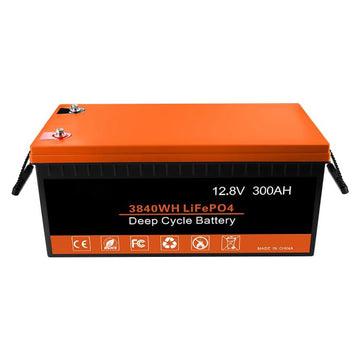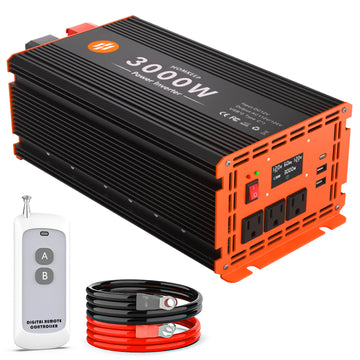Lithium, as a lightweight metal, occupies a crucial position in modern technology due to its unique physical and chemical properties, especially in the fields of batteries, electronics, and renewable energy. Lithium-ion batteries have become an integral part of modern life due to their efficiency and convenience. This article will walk you through the properties of lithium and how they can be applied.
What is lithium?
Lithium, the chemical symbol Li, is located in the s region of the periodic table, an alkali metal; with atomic number 3; and a relative atomic mass of 6.941. Lithium metal is solid at 298 K and is silvery white or gray. In the air, lithium quickly loses its luster.
Lithium is a first-period element that contains one valence electron (1s 2 2s 1) and has a density about half that of water in the solid state. The element lithium has an atomic radius (empirical value) of 145 pm, an atomic radius (calculated value) of 167 pm, a covalent radius (empirical value) of 134 pm, a van der Waals radius of 182 pm, and an ionic radius of 68 pm.
History and discovery of lithium
The discovery of lithium is attributed to the Swedish chemist Johan August Arfvedson, who first discovered the presence of the element while analyzing a mineral, petalite, from the Swedish island of Utö. In his research, Arfvedson noted that the mineral lithium pyroxene contained a new alkali metal component, but he was unable to isolate the element as a pure metal at the time.
Avertson named the new element “lithium”, from the Greek word “lithos”, meaning “stone”. The name emphasizes the fact that lithium is different from other alkali metals such as sodium and potassium - it was first found in ores, not in living organisms or in aqueous solutions.
Physical properties of lithium

1. Light and malleable
The lithium atom has only three protons and four neutrons in its nucleus and only two layers of electrons on its outer shell. This simple atomic structure makes lithium extremely light in mass. The density of lithium is only 0.534 g/cm³, which is the lowest density of all metals and lighter than water. Lithium's lightweight advantage makes it an ideal material for portable and weight-sensitive technologies.
2. High thermal and electrical conductivity
Lithium has a thermal conductivity of 84.8 W/(m-K), which is among the highest of any metal. It effectively manages heat and prevents overheating in lithium batteries.
Lithium has an electrical conductivity of approximately 10.6×10⁶ S/m, which is lower than copper and silver, but still meets the conductive needs of batteries and other electronic devices.
3. Softness and silver appearance
Lithium is one of the softest metals and is easily malleable. This makes lithium very easy to work with in industrial production. Freshly cut lithium has a bright, silver-white luster. However, due to its high reactivity, lithium quickly reacts with oxygen in the air to form lithium oxide (Li₂O) on the surface, dulling the luster.
Chemical properties of lithium

1. Reaction of lithium with air
Lithium metal is easy to cut with a knife. You can see the shiny silver surface, but it quickly turns gray as it reacts with oxygen and water vapor in the air. When lithium burns in the air, the main product is Li2O, a white lithium oxide. Some lithium peroxide, Li2O2, is also white.
4Li(s)+O2(g)→2Li2O (s)
2Li(s)+O2(g)→Li2O2(s)
2. Reaction of lithium with water
Lithium reacts with water at room temperature to form hydrogen gas (H₂) and lithium hydroxide (LiOH), a more violent reaction, but not as violent as sodium and potassium. The reaction produces a colorless solution of lithium hydroxide (LiOH) and hydrogen gas (H2), and the resulting solution is alkaline. Due to the production of hydroxide, the reaction releases heat, enough to ignite the hydrogen gas produced and cause a spark or flame.
2Li(s)+2H2O→2LiOH(aq)+H2(g)
The chemical properties of lithium allow it to combine with a wide range of non-metallic elements to form compounds with unique functionalities.
3. The key role of lithium compounds in lithium battery production
Anode materials: Lithium compounds, such as lithium cobalt oxide (LiCoO₂) and lithium iron phosphorus (LiFePO₄), are widely used as anode materials for lithium-ion batteries. With high energy density, stability, and long cycle life, these compounds are the core of modern battery technology.
Battery electrolyte: Lithium hydroxide and other lithium salts (e.g., lithium hexafluorophosphate) are key components of lithium-ion battery electrolytes, which contribute to efficient lithium-ion conduction and ensure battery stability and safety.
See More: How Does a Lithium-ion Battery Work?
4. Stability and ionization energy
Alkali metal properties: lithium belongs to the alkali metal family (group IA), and elements in this group are generally highly reactive. Similar to other alkali metals (e.g., sodium, potassium), lithium tends to lose its outermost electrons to form cations (Li⁺) and reacts with water, air, etc.
Specialization: Although lithium is an alkali metal, it differs from other elements in its chemical reactivity and stability. Due to its small atomic radius and high ionization energy, lithium exhibits high stability when reacting with other elements, which makes it crucial in the development of efficient batteries.
Ionization Energy: Lithium has a first ionization energy of 5.39 eV, which allows it to readily lose its outermost electrons to form Li⁺ ions, but its ionization energy is relatively high compared to other alkali metals such as sodium. As a result, lithium is less reactive and has better stability in battery applications.
Why lithium is so valuable?
Lithium is valuable because of its unique properties in energy applications.
High energy density: Powering portable devices and electric vehicles
Lithium batteries, with their extremely high energy density, are at the heart of powering smartphones, laptops, and portable devices. These devices require lightweight, long-lasting batteries, and lithium meets these needs.
In electric vehicles, lithium batteries enable electric vehicles to have a long-range, while reducing the weight of the battery improves the efficiency of the entire vehicle.
Long life cycle performance: The core of sustainable applications
The ability of lithium-ion batteries to maintain a high capacity after multiple charge/discharge cycles makes them particularly suitable for applications that require a stable output over a long period, such as grid energy storage and home energy storage systems. Compared with traditional batteries (e.g. lead-acid batteries), lithium-ion batteries have a cycle life of thousands of cycles, which significantly reduces the cost of ownership.
Fast charging capability: Supporting the fast pace of modern life
The high electrochemical reactivity of lithium allows lithium-ion batteries to be recharged quickly, dramatically reducing charging times for electric vehicles and waiting times for electronic devices. This property is critical to supporting smart living and the electrification of transportation.
Stable energy storage capacity: Powering renewable energy sources
Lithium-ion batteries can efficiently store intermittent energy sources such as solar and wind, solving the problem that these energy sources are difficult to deploy due to their instability. Lithium battery energy storage systems provide technical support for grid regulation of peak loads, helping to improve energy efficiency and promote energy decarbonization.
Scalability: Adapt to the needs of different scenarios
The modular design of lithium batteries allows them to adapt to a wide range of needs, from small consumer electronics to large-scale grid energy storage systems.
This flexibility gives lithium batteries a competitive advantage in energy applications of varying sizes.
Lithium-ion battery application in electric vehicles
Electric vehicles (EVs) are one of the most important application fields for lithium-ion batteries. Li-ion batteries have become the core power source of EVs due to their high energy density, and long-range and fast charging characteristics.
Impact and advantages
- Long Range: Lithium-ion batteries can provide enough energy to allow electric vehicles to travel a longer distance on a single charge. Technological advances have dramatically improved the range of modern electric vehicles, and many electric vehicles have a range of more than 300 kilometers.
- Charging Speed: The fast-charging characteristics of lithium batteries allow electric vehicles to complete charging in a relatively short time, greatly improving user convenience. For example, a fast-charging station can charge an EV 80% in about 30 minutes.
- Reduced carbon emissions: Electric vehicles powered by lithium-ion batteries have significantly reduced carbon emissions compared to traditional fuel vehicles, helping to reduce air pollution and greenhouse gas emissions, which is one of the most important technologies to combat global climate change.
- Low maintenance costs: Compared to internal combustion vehicles, electric vehicles have lower maintenance costs due to the small number of moving parts and efficient battery systems. The stability of lithium batteries also reduces the frequency of battery replacement.
Lithium-ion battery application in grid applications
The use of lithium-ion batteries for grid storage is becoming increasingly important as renewable energy sources such as solar and wind become more prevalent around the world. Grid storage technologies can help balance power supply and demand and increase the efficiency of renewable energy use.
Impacts and benefits
- Balancing supply and demand: Grid storage systems help balance the supply of electricity by storing excess power (e.g., excess solar power during the day) and releasing it during periods of peak demand (e.g., at night).
- Supports the stability of renewable energy: Renewable energy generation is often intermittent, and Li-ion batteries provide fast-response energy storage and release, effectively managing the intermittency of renewable energy and contributing to power system stability.
- Improve power system efficiency: Grid storage technology reduces energy waste and improves the efficiency of the entire power system through more efficient power management and distribution, especially during periods of high demand.
- Reduce dependence on the traditional grid: Li-ion battery storage systems can provide an independent source of power for remote or underserved areas, reducing reliance on the traditional grid and enabling greater energy accessibility.
















